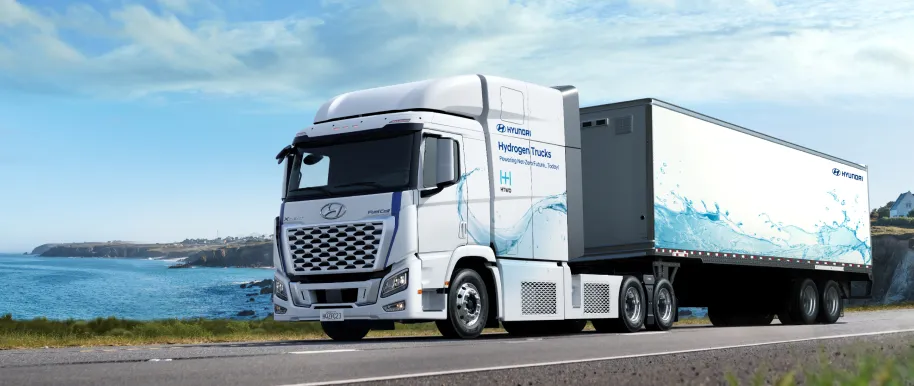HTWO Fuel Cell Solution
HTWO Fuel Cell System provides a scalable energy solution that supports diverse applications.


Zero Emissions
A hydrogen-powered
powertrain that emits
only pure water.
Electricity generated from the reaction between hydrogen and oxygen powers the vehicle, and the only emission during driving is water vapor. Hydrogen fuel cell systems enable zero tailpipe emission, contributing to cleaner transportation and advancing sustainable mobility.
High efficiency
Outstanding fuel efficiency
Key system components have been optimized to
achieve outstanding fuel efficiency.
up to 61.7%


Fuel Processing System
Controls the hydrogen supply to the fuel cell

Air Processing System
Provides oxygen from the ambient air

Fuel Cell Stack
A core component of a fuel cell system
that converts chemical energy into electrical
energy through the hydrogen-oxygen reaction

Power Distribution Unit
Distributing electrical energy produced in the stack

Thermal
Management
System
Controls optimal reaction temperature
Zero Emissions
A hydrogen-powered
powertrain that emits
only pure water.
Electricity generated from the reaction between hydrogen and oxygen powers the vehicle, and the only emission during driving is water vapor. Hydrogen fuel cell systems enable zero tailpipe emission, contributing to cleaner transportation and advancing sustainable mobility.
High efficiency
Outstanding fuel efficiency
Key system components have been optimized to achieve outstanding fuel efficiency.
up to 61.7%

Fuel Processing System
Controls the hydrogen supply to the fuel cell

Air Processing System
Provides oxygen from the ambient air

Fuel cell stack
A core component of a fuel cell system
that converts chemical energy
into electrical energy through
the hydrogen-oxygen reaction

Power Distribution Unit
Distributing electrical energy
produced in the stack

Thermal Management
System
Controls optimal reaction temperature
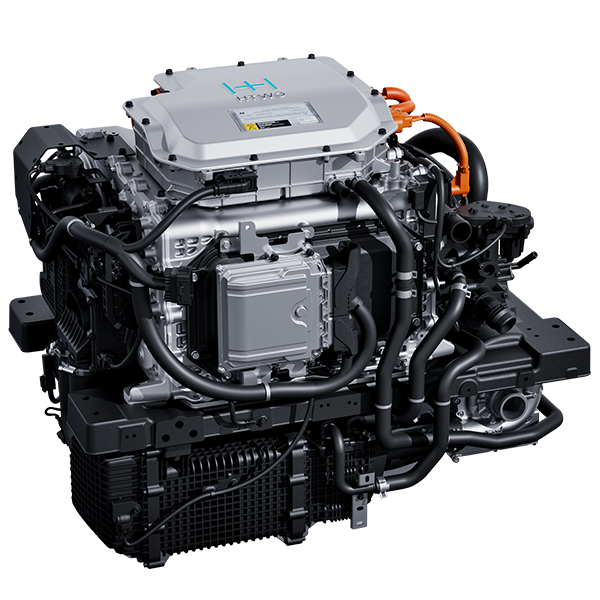
HTWO Fuel Cell Solution
Engine-type Fuel Cell System
The new engine-type fuel cell system is a product developed based on fuel cell system of XCIENT heavy-duty truck, equipped with improved power density, optimized driving technology, and enhanced customer convenience such as interface and communication environment.
| Division | Item | Specification |
|---|---|---|
| Performance | Output | 94 kW net @BOL |
| Min. Output | 30 kW net | |
| Voltage | PMC out : 250 ~ 450 V FDC out (Supplied) : 450 ~ 828 V |
|
| Current | 360 A | |
| Efficiency | Max 61.7 % | |
| Specification | Size | 651 x 888 x 718 mm (L x W x H) |
| Weight | 181 kg | |
| Volume | 415 L | |
| IP Rating | IP67 / IP69K | |
| Operating Environmen | Environment Temperature | -30 ~ 50 ℃ |
| Hydrogen Quality | ISO 14687-2 / SAE J2719 | |
| Hydrogen Pressure | 18 bara ± 1.5 bar | |
| Supply Voltage | PMC : 12 V DC FDC : 12-24 V DC |
|
| Communication | HS CAN (2.0B 500kbit/s, extended ID) | |
| Utilization | Utilization | Light Commercial Vehicles, Passenger car Medium-duty truck, Heavy-duty truck, Special-Purpose Vehicle, City Bus Intercity Bus, Power Generator |
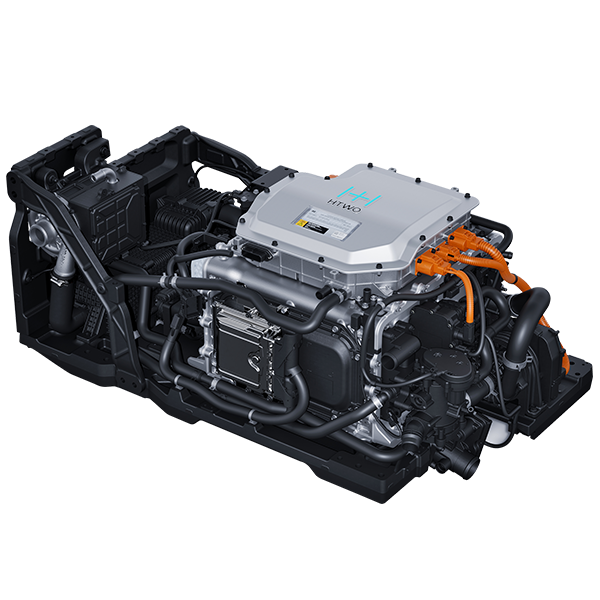
HTWO Fuel Cell Solution
Flat-type Fuel Cell System
The flat system configuration reduces the height of our fuel cell technology through repackaging of the balance of plant. It can be used in applications where there are height restrictions on packaging.
| Division | Item | Specification |
|---|---|---|
| Performance | Output | 94 kW net @BOL |
| Min. Output | 30 kW net | |
| Voltage | PMC out : 250 ~ 450 V FDC out (Supplied) : 450 ~ 828 V |
|
| Current | 360 A | |
| Efficiency | Max 61.7 % | |
| Specification | Size | 680 x 1,188 x 532 mm (L x W x H) |
| Weight | 195 kg | |
| Volume | 405 L | |
| IP Rating | IP69K | |
| Operating Environmen | Environment Temperature | -30 ~ 50 ℃ |
| Hydrogen Quality | ISO 14687-2 / SAE J2719 | |
| Hydrogen Pressure | 18 bara ± 1.5 bar | |
| Supply Voltage | PMC : 12 V DC FDC : 12-24 V DC |
|
| Communication | HS CAN (2.0B 500kbit/s, extended ID) | |
| Utilization | Utilization | Rolling stock (tram, train, etc.) Medium-duty truck, Heavy-duty truck, Special-purpose vehicle City bus, Intercity bus Power generator |
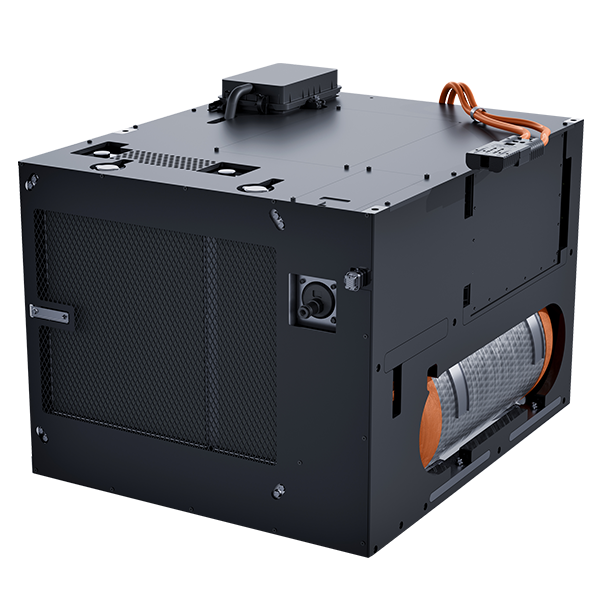
HTWO Fuel Cell Solution
Fuel Cell Power Pack
The Power pack is a fully integrated fuel cell system, including batteries, hydrogen tanks and controls for effortless conversion of equipment.
| Division | Item | Specification |
|---|---|---|
| Performance | Max. Output | 30 kW net (peak 60 kW net for 5 sec, depending on load profile) |
| Rated Output | 20 kW net | |
| Voltage | 80 V DC | |
| Efficiency | 54.4 % (LHV) @ Rated Power | |
| Specification | Size | 1,030 x 855 x 780 mm (L x W x H) |
| Weight | 964 kg | |
| Battery Capacity | 4.0 kWh | |
| IP Rating | IP24 | |
| Operating Environmen | Environment Temperature | -20 ~ 40 ℃ |
| Hydrogen Quality | ISO 14687-2 / SAE J2719 | |
| Hydrogen Pressure | 700 bar | |
| Tank Capacity | 52 L (2.11 kg) | |
| Driving Time | 4 ~ 5 hr * depends on duty cycle |
|
| Certification | Certification | KGS AH372 |
| Utilization | Utilization | Material Handling (Forklifts) Industrial Equipment (Aerial work platforms) Construction Equipment Port Equipment |
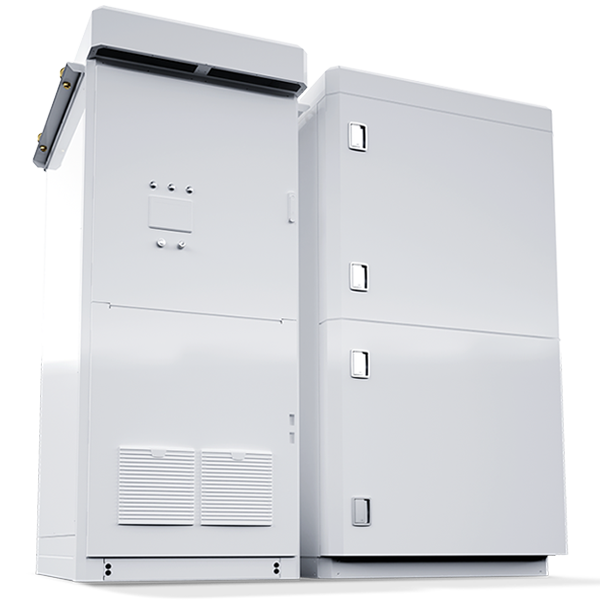
HTWO Fuel Cell Solution
Fuel Cell Power Generator
The 100 kW fuel cell generator, composed of a fuel cell system and a power conversion unit, is a product that can be connected to the grid and is a solution for buildings and small-scale distributed power generation.
| Division | Item | Specification |
|---|---|---|
| General Specification | Fuel Cell Type | PEMFC (Hydrogen Fuel) |
| Output | 100 kW (Peak), 70 kW (Rated) | |
| Operation | Grid-Connection | |
| Efficiency | 50 % ↑ (LHV) | |
| Specification | Size |
Generation 1,300 x 1,500 x 2,300 mm (1,400kg) PCS 1,000 x 1,500 x 2,340 (1.400kg) |
| Grid Voltage | AC 380 V (3-phase 4-wire, 60Hz) | |
| Communication | Ethernet (TCP/IP) and serial (RS-485) | |
| Installation Environment | Fuel |
Hydrogen (ISO 14687-2 / SAE J2719), Required Supply Pressure 7~9 bar Plumbing connections via pipelines, etc. |
| Others |
Indoor/Outdoor Installation, Forced Exhaust (PE), Antifreeze or water cooling (separate equipment) |
|
| Certification | Certification | KGS AH371 |
| Utilization | Utilization | Self-generation for buildings Small-scale distributed power generation |
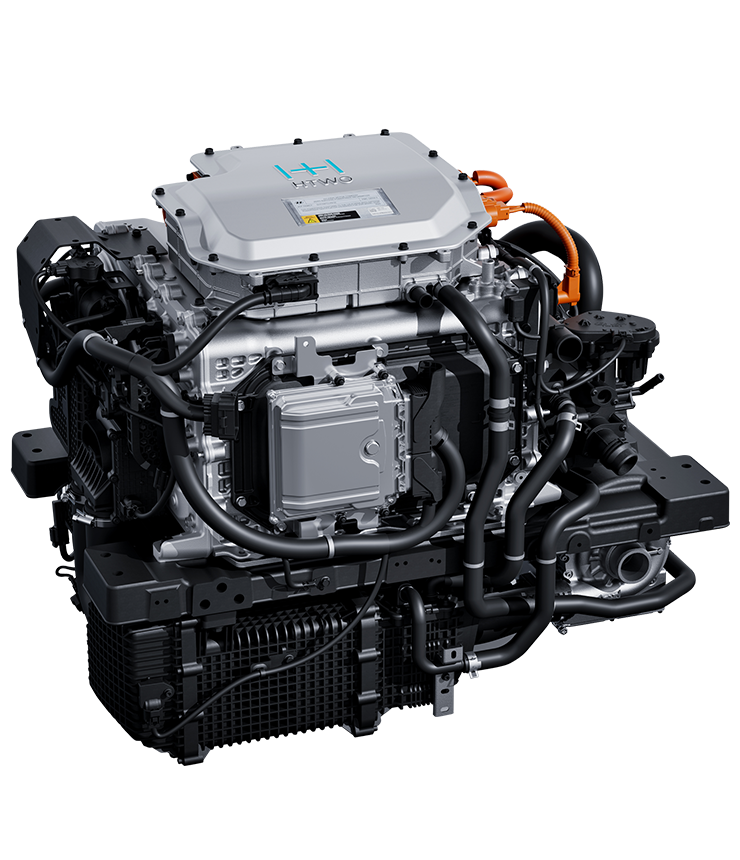
HTWO Fuel Cell Solution
Engine-type Fuel Cell System
The new engine-type fuel cell system is a product developed based on fuel cell system of XCIENT heavy-duty truck, equipped with improved power density, optimized driving technology, and enhanced customer convenience such as interface and communication environment.
| Division | Item | Specification |
|---|---|---|
| Performance | Output | 94 kW net @BOL |
| Min. Output | 30 kW net | |
| Voltage | PMC out : 250 ~ 450 V | FDC out (Supplied) : 450 ~ 828 V |
|
| Current | 360 A | |
| Efficiency | Max 61.7 % | |
| Specification | Size | 651 x 888 x 718 mm (L x W x H) |
| Weight | 181 kg | |
| Volume | 415 L | |
| IP Rating | IP67 / IP69K | |
| Operating Environmen | Environment Temperature | -30 ~ 50 ℃ |
| Hydrogen Quality | ISO 14687-2 / SAE J2719 | |
| Hydrogen Pressure | 18 bara ± 1.5 bar | |
| Supply Voltage | PMC : 12 V DC / FDC : 12-24 V DC | |
| Communication | HS CAN (2.0B 500kbit/s, extended ID) | |
| Utilization | Utilization | Light Commercial Vehicles, Passenger Car Medium-duty truck, Heavy-duty truck, Special-Purpose Vehicle, City bus Intercity Bus, Power Generator |
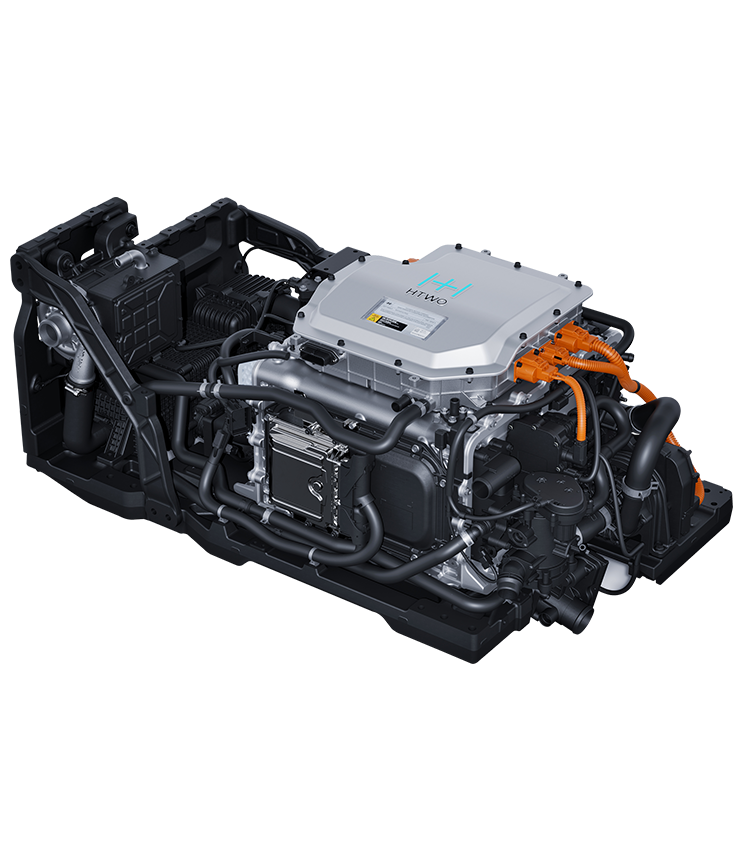
HTWO Fuel Cell Solution
Flat-type Fuel Cell System
The flat system configuration reduces the height of our fuel cell technology through repackaging of the balance of plant. It can be used in applications where there are height restrictions on packaging.
| Division | Item | Specification |
|---|---|---|
| Performance | Output | 94 kW net @BOL |
| Min. Output | 30 kW net | |
| Voltage | PMC out : 250 ~ 450 V | FDC out (Supplied) : 450 ~ 828 V |
|
| Current | 360 A | |
| Efficiency | Max 61.7 % | |
| Specification | Size | 680 x 1,188 x 532 mm (L x W x H) |
| Weight | 195 kg | |
| Volume | 405 L | |
| IP Rating | IP69K | |
| Operating Environmen | Environment Temperature | -30 ~ 50 ℃ |
| Hydrogen Quality | ISO 14687-2 / SAE J2719 | |
| Hydrogen Pressure | 18 bara ± 1.5 bar | |
| Supply Voltage | PMC : 12 V DC / FDC : 12-24 V DC | |
| Communication | HS CAN (2.0B 500kbit/s, extended ID) | |
| Utilization | Utilization | Rolling stock (tram, train, etc.) Medium-duty truck, Heavy-duty truck, Special-Purpose Vhicle City bus, Intercity bus Power generator |
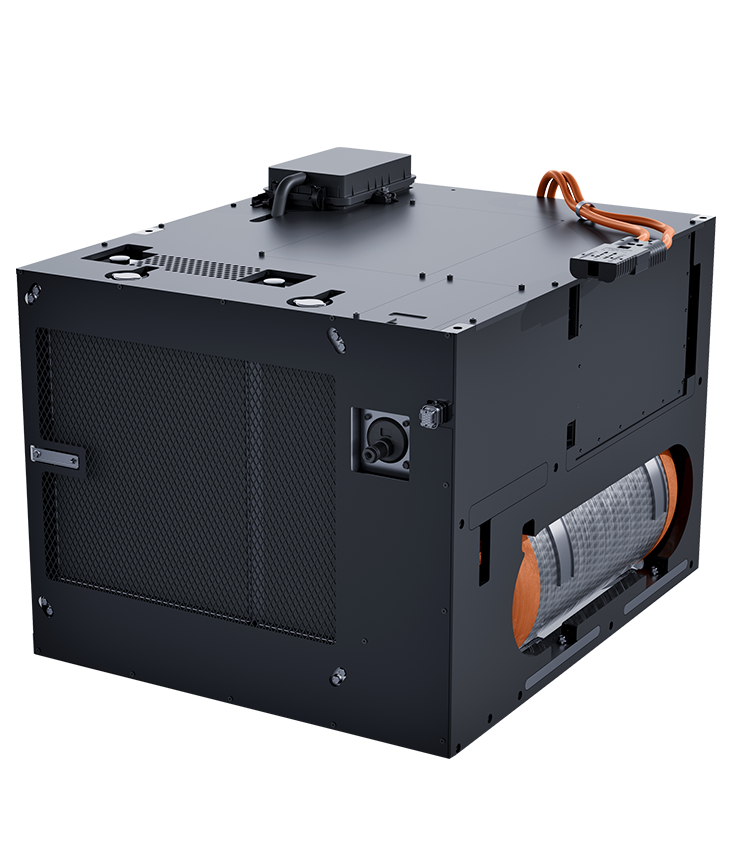
HTWO Fuel Cell Solution
Fuel Cell Power Pack
The power pack is a fully integrated fuel cell system, including batteries, hydrogen tanks and controls for effortless conversion of equipment.
| Division | Item | Specification |
|---|---|---|
| Performance | Max. Output | 30 kW net (peak 60 kW net for 5 sec, depending on load profile) |
| Rated Output | 20 kW net | |
| Voltage | 80 V DC | |
| Efficiency | 54.4 % (LHV) @ Rated Power | |
| Specification | Size | 1,030 x 855 x 780 mm (L x W x H) |
| Weight | 964 kg | |
| Battery Capacity | 4.0 kWh | |
| IP Rating | IP24 | |
| Operating Environmen | Environment Temperature | -20 ~ 40 ℃ |
| Hydrogen Quality | ISO 14687-2 / SAE J2719 | |
| Hydrogen Pressure | 700 bar | |
| Tank Capacity | 52 L (2.11 kg) | |
| Driving Time | 4 ~ 5 hr * depends on duty cycle |
|
| Certification | Certification | KGS AH372 |
| Utilization | Utilization | Material Handling (Forklifts) Industrial Equipment (Aerial work platforms) Construction Equipment Port Equipment |
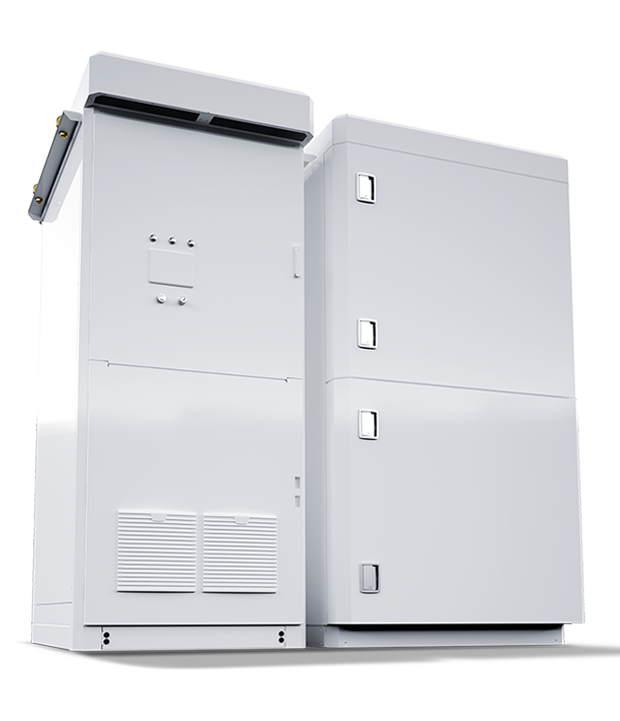
HTWO Fuel Cell Solution
Fuel Cell Power Generator
The 100 kW fuel cell generator, composed of a fuel cell system and a power conversion unit, is a product that can be connected to the grid and is a solution for buildings and small-scale distributed power generation.
| Division | Item | Specification |
|---|---|---|
| General Specification | Fuel Cell Type | PEMFC (Hydrogen Fuel) |
| Output | 100 kW (Peak), 70 kW (Rated) | |
| Operation | Grid-Connection | |
| Efficiency | 50 % ↑ (LHV) | |
| Specification | Size |
Generation 1,300 x 1,500 x 2,300 mm (1,400kg) PCS 1,000 x 1,500 x 2,340 (1.400kg) |
| Grid Voltage | AC 380 V (3-phase 4-wire, 60Hz) | |
| Communication | Ethernet (TCP/IP) and serial (RS-485) | |
| Installation Environment | Fuel |
Hydrogen (ISO 14687-2 / SAE J2719), Required Supply Pressure 7~9 bar Plumbing connections via pipelines, etc. |
| Others |
Indoor/Outdoor Installation, Forced Exhaust (PE), Antifreeze or water cooling (separate equipment) |
|
| Certification | Certification | KGS AH371 |
| Utilization | Utilization | Self-generation for buildings Small-scale distributed power generation |
HTWO
Fuel Cell Applications
-


Passenger Car
-

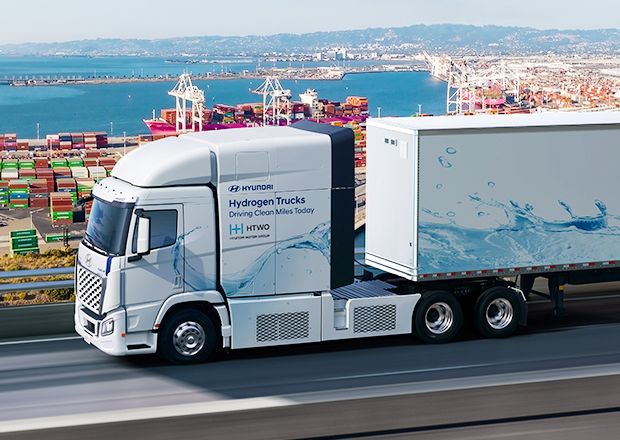
Heavy-Duty Truck
-


Bus
-
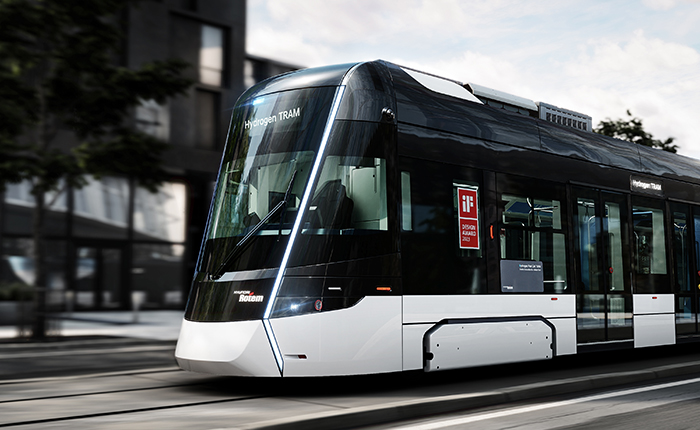
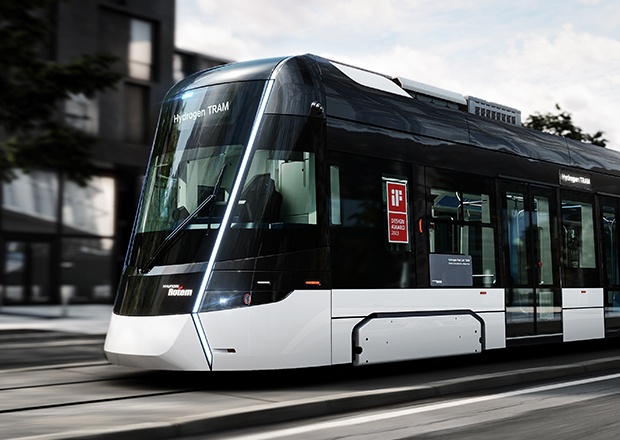
Tram
-
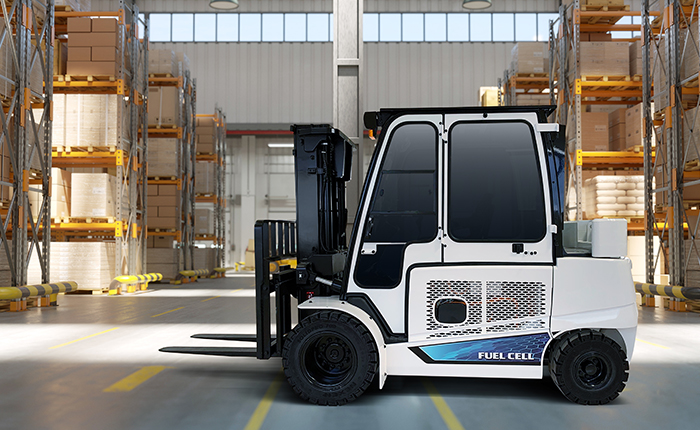
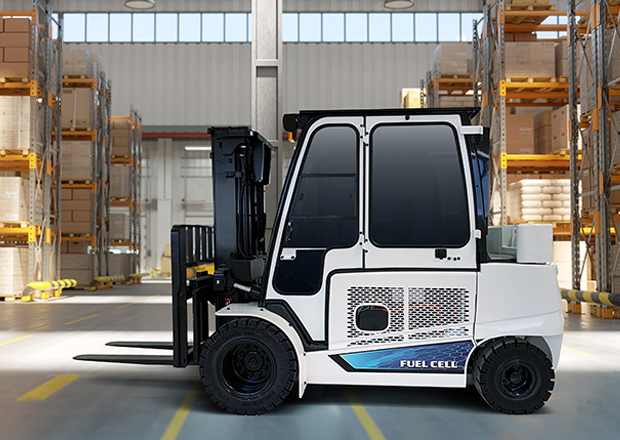
Forklift
-
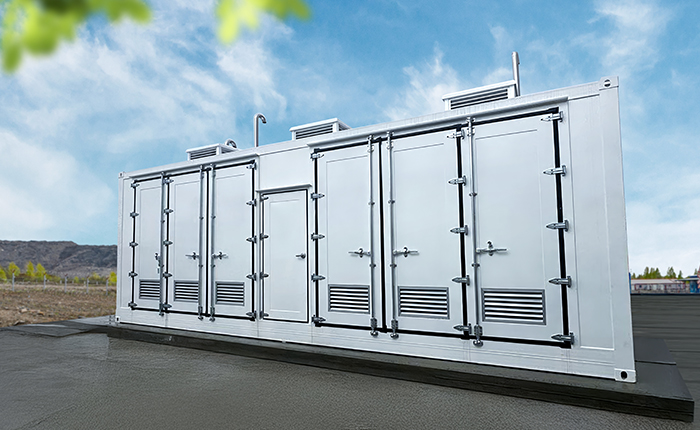

Power Generator


